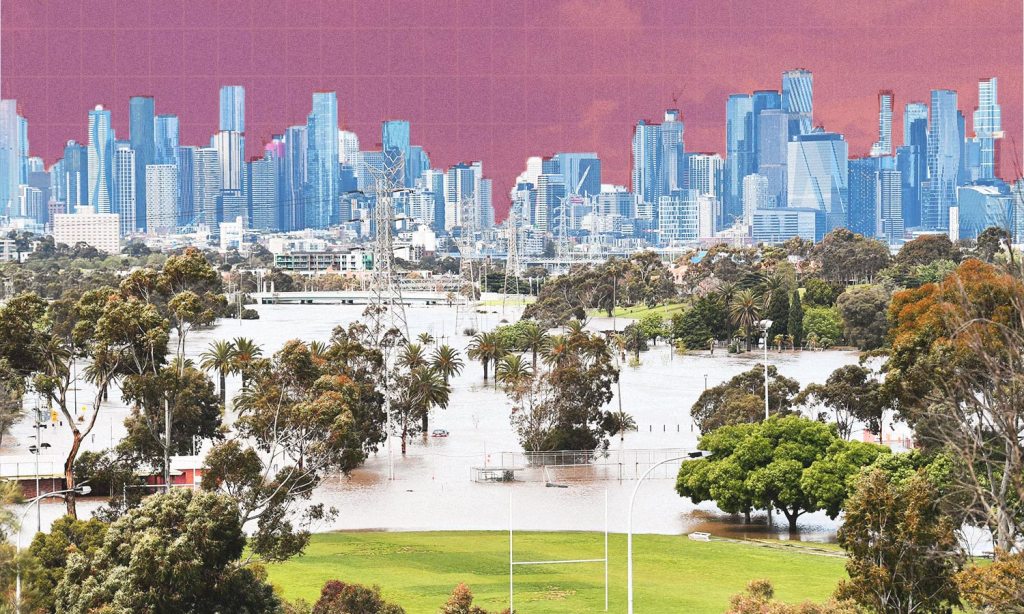Australia’s climate has never been known for being forgiving. It’s harsh, brutal, and often our biggest adversary. But at least it’s always been fairly predictable.
Once in a hundred-year flood, once in a hundred-year fires used to come, well, once in a hundred years. Now they’re happening with sickening regularity.
We don’t have the money, time, or effort to recover from the previous disaster before the next one strikes. Our past few summers have been an absolute washout; the one before saw thousands of homes burn and billions of animals harmed or killed.
Underpinning it all? Climate change.
It’s not exactly surprising that we’ve reached this point. Climate change is no longer a warning about our future, it’s our present reality. Australia has warmed by an average of 1.44 degrees celsius since the 1800s, but we’ve been told for centuries that this was going to happen.
In 1856, a once-forgotten female scientist by the name of Eugine Foote proved that increasing CO2 in the Earth’s atmosphere would increase the planet’s overall temperature. In 1974, the CIA published a report that said climate change began in the 1960s and that no one saw the widespread droughts and floods as anything other than unlucky. In 1992, 12-year-old Severn Suzuki told the world at the UN Earth Summit that “if you don’t know how to fix it, stop breaking it”.
And yet, here we are, with the UN sounding “code red for humanity“. So, how far is this weather normal and is it going to last forever? Here’s what we know about the short-term future of the climate.
Is the Current Weather Climate Change?
On Twitter, the Climate Council have written that “climate change isn’t a footnote to the story of this year’s major flooding events, it is the story.”
There, they refer to the words of Professor David Karoly, a climate scientist working with the organisation. He’s said that the weather we’re currently experiencing is “the climate system on steroids.”
“[Climate change] makes some extreme events, like extreme temperatures and rainfall, more extreme.”
There’s a lot of weather factors currently at play that are dumping water right across the country. In the east you have La Niña, in the south you have the Southern Annular Mode, and to the west you’ve got the Indian Ocean Dipole. These are all relatively normal events, but, as Karoly says, they’ve been supercharged by climate change.
Warmer air can ‘hold’ more moisture. For every degree of warming that the planet goes through, you’re looking at a 7% increase of water vapour in the atmosphere. That’s why the rain has become so intense of late — there’s simply more liquid up there thanks to higher average temperatures.
While Australia’s climate agency, the Bureau of Meteorology, is reluctant to attribute any one weather event to climate change specifically, they note in their 2020 State of the Climate report that “climate change is influencing these trends.”
The agency formerly known as the BoM said at the time that the impact is being seen in temperature, rainfall, humidity, and that extreme events are growing in frequency. These trends are expected to continue through the “coming decades,” they wrote.

Is the Weather Ever Going to Be Normal Again?
Well, we’re probably going to have to update our understanding of just what ‘normal’ means.
In March, CSIRO’s climate science director Jaci Brown said that there is a “new normal” in how we understand Australian weather.
Our four seasons are expected to shift, with winter being drier and summer bringing more storms and marine heatwaves.
By all accounts, this is just the beginning, with the climate and the disasters that it brings set to get worse unless serious action is taken by world governments.
In Europe this summer, they experienced the most intense heatwave on record, with all-time high temperatures reached, widespread browning across the land, and severe wildfires.
The World Metrological Organisation Secretary-General said at the time that “in the future, these kind of heatwaves are going to be normal.”
However, just because climate change is here doesn’t mean we need to despair or give up our efforts to stop it. Right now we’re beyond stopping climate change. It’s happening. Now we’re into the containment phase.
While the weather may never consistently be what we remember it once was, we still have the power to stop it getting worse. Limiting the impact of man-made climate change is absolutely a fight worth having and maintaining pressure on governments and corporations to do more to limit the release of carbon dioxide into the atmosphere is a key priority.
The weather may never be the same again, but that doesn’t mean we should just accept it.
Related: If We Want to Get Serious About Climate Change, We’re Going to Need Cows to Stop Farting
Related: Save $1899 While Saving the Planet From Climate Change — Here’s How
Read more stories from The Latch and subscribe to our email newsletter.







